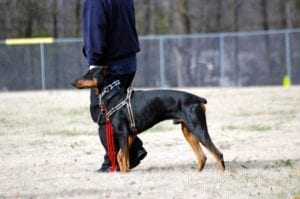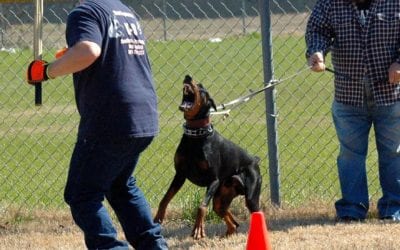Board and Train Welcome Letter
How many training sessions do you do in a day with each dog?
This is a question that I get several times a day. Although, I understand where the question is coming from, I encourage you to look at it a different way.
When we think about obedience training our minds instantly default to a dog that sits and downs on command, while, being intensely focused on you, the owner. The reason we picture this is because of all of the marketing and media that encourages us to purchase dog training, by painting a perfect picture of the perfect end result. All of this marketing is designed to entice you to subscribe to a channel or purchase that program that will solve all of your dog problems. I can tell you with 100% honesty that there are no perfect dogs. I have had the pleasure of working around and training some amazing dogs, but none of them have been perfect. I have seen some amazing trainers get frustrated to the point of anger with seasoned dogs that mess up the simplest commands in the worst situations.
There are several different techniques to teach the basic commands, but the one thing that they all have in common is repetition. I make the following statement all of the time. “Give me a bad dog in a controlled environment, and through reward and repetition, I will make it look amazing. However, take that dog back to its normal environment and you will see very little difference.”
Now, let me paint you a different picture. Take away all of the things that you have been programmed to believe, in regard to dog training. Let’s take a different approach. What does your dog do most of the time? Nothing! You read it right, your dog does nothing most of the time. If you take out the daily one hour walk and maybe some play time, you require your dog to do nothing most of the time.
 So how do you teach your dog to be good while doing nothing? When you think about training, start by thinking about manners. Your dog has to be taught how to act in each and every situation it encounters throughout the day. The training that is often left out is situational training. Meaning, working the dog through everyday, life and stress situations. The dog needs to be taught how to live with us in our homes. They need to be taught how to greet and interact with people and other dogs. Dogs even need to be taught to turn off and calm down on command. You will hard pressed, to find any talk about this on line and or in books. I am not saying that you won’t find it, I am just saying that there are very few trainers that will talk about it. Why is that? I truly believe it is because, this part of the training is very hard to communicate. This part of the training has to deal with correction and consequences. Although correction and consequences are a part of every type of dog training, it is taboo to talk about it. As soon as you show a dog receiving a leash correction or explain the process on line, there are keyboard critics that bombard your email with their opinions. So, it is much easier for most not to talk about it.
So how do you teach your dog to be good while doing nothing? When you think about training, start by thinking about manners. Your dog has to be taught how to act in each and every situation it encounters throughout the day. The training that is often left out is situational training. Meaning, working the dog through everyday, life and stress situations. The dog needs to be taught how to live with us in our homes. They need to be taught how to greet and interact with people and other dogs. Dogs even need to be taught to turn off and calm down on command. You will hard pressed, to find any talk about this on line and or in books. I am not saying that you won’t find it, I am just saying that there are very few trainers that will talk about it. Why is that? I truly believe it is because, this part of the training is very hard to communicate. This part of the training has to deal with correction and consequences. Although correction and consequences are a part of every type of dog training, it is taboo to talk about it. As soon as you show a dog receiving a leash correction or explain the process on line, there are keyboard critics that bombard your email with their opinions. So, it is much easier for most not to talk about it.
Back to the opening question. How many training sessions do you do with each dog every day? When the dog is in the program they are always in session. Whether it be barking in the kennel, rushing the door, or jumping on people, they are always being trained. I put the dogs in situations that I am certain they will fail, so I can give correction and direction. The dogs are placed in distracting and chaotic situations so I can help them grow and push through these situations. You have to teach the dog to be calm and rely on you for direction. To accomplish this, you have to earn the dogs trust. You earn trust through communication and reward. A skill that has to be learned by each owner is reading the dog’s behavior. You want to push the dog beyond its limitations but not so far that the dog is completely overwhelmed. Training is done by small steps, moving a little further forward with each session. Knowing the dogs breaking point is important. Keeping in mind that every dog is different and requires a different type of motivation.
A good thing to remember is, your dog is in training all of the time. Not only when you are working on commands. Dogs are very adaptable and, if worked with consistently, will adapt to your schedule and way of life. Almost everything a dog does is a learned behavior, so lead them and teach them how they should behave and your life will be much easier.
View More Resources:
Who is the Protector in Your Relationship?
Resources Who is the protector in your relationship? Do you protect your dog, or does your dog protect you? I can honestly say that for the longest time I looked to my dogs for a large level of protection. A lot of people that get dogs, do so, not only for...
Aggression Rehab and Behavior Modification
Resources Aggression Rehab and Behavior Modification Aggression rehab and behavior modification is something that we do a good bit. It can be one of the most rewarding aspects of dog training, as well as one of the most heartbreaking. Whether it be in house, dog on...
Join Our Community
We have a very active social media following- join our community to check out our how-to videos, Q&A's, and more!


